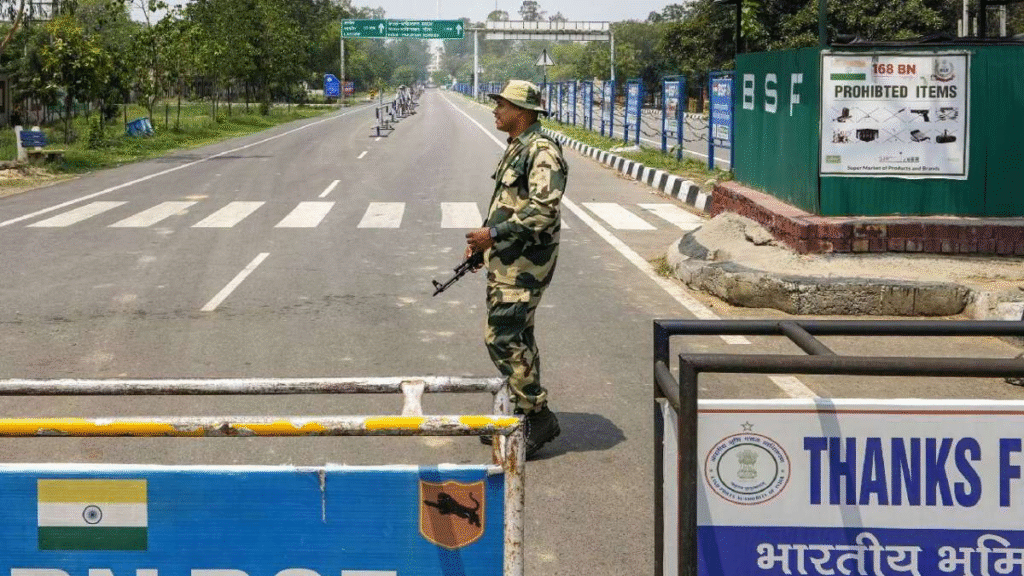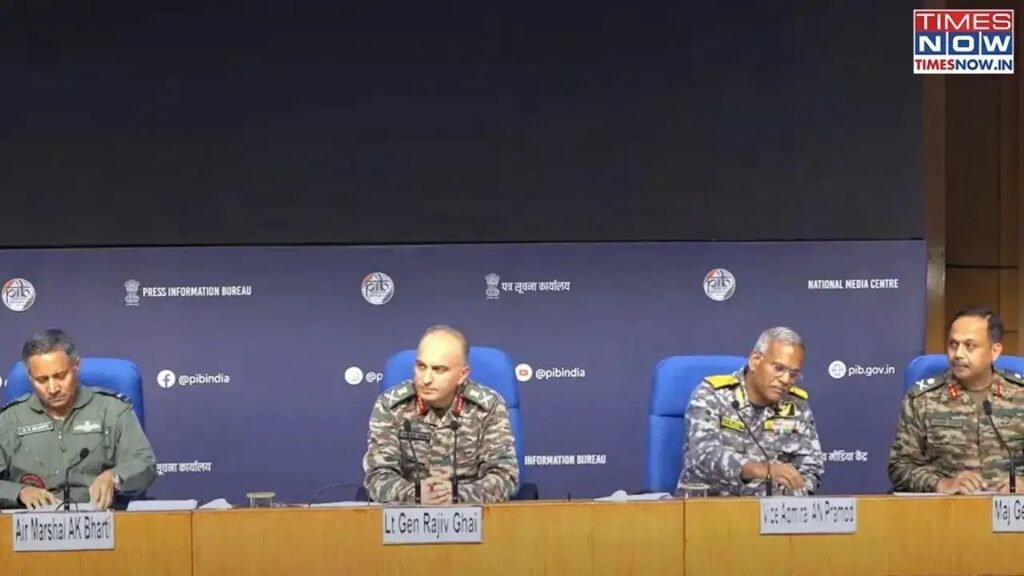In a region fraught with historic tensions and military confrontations, today’s scheduled military-level talks between India and Pakistan mark a significant moment. Set for noon today, the talks are expected to focus on reducing border hostilities, improving communication channels, and finding ways to de-escalate recent flashpoints along the Line of Control (LoC). As the international community watches closely, this India-Pakistan Military Talks Noon Today: engagement could serve as a critical step toward regional stability.
The military dialogue comes amid renewed tensions and increasing global calls for de-escalation. While expectations for sweeping breakthroughs are measured, India-Pakistan Military Talks Noon Today: today’s meeting nonetheless signals a commitment—however cautious—toward dialogue over confrontation.

Historical Context: The Path to Today’s Talks
India and Pakistan, two nuclear-armed neighbors, share a volatile relationship marked by four wars (1947, 1965, 1971, and 1999) and numerous military standoffs. Most disputes trace back to the unresolved status of Jammu and Kashmir—a territory both nations claim in full India-Pakistan Military Talks Noon Today: but control in part.
Despite long-standing hostility, both sides have periodically resumed dialogues, including military, diplomatic, and even people-to-people engagements. These military-level talks, typically held between senior officers from each side’s Directorates of Military Operations (DGMOs), are essential for maintaining ground-level peace and managing sensitive border incidents.
The last significant thaw occurred in February 2021 when both sides agreed to strictly observe the 2003 ceasefire agreement. However, tensions have flared once again in 2024 India-Pakistan Military Talks Noon Today: and early 2025, necessitating renewed dialogue.
Why Are the Talks Happening Now?
Several recent developments have pushed both nations toward the negotiation table:
1. Ceasefire Violations at the LoC
Early 2025 has witnessed a rise in ceasefire violations, especially in sectors like Poonch, Uri, and Keran. These skirmishes have led to military and civilian casualties on both sides, heightening the urgency for de-escalation.
2. Drone Surveillance and Cross-Border Smuggling
Both India and Pakistan have reported drone activity near their borders. India alleges that drones from Pakistan are used to drop arms and narcotics in Punjab and Jammu & Kashmir. Pakistan, on the other hand, has raised concerns over alleged Indian drone intrusions.
3. Geopolitical Pressure
With global tensions high—from the Russia-Ukraine war to unrest in the Middle East—major powers are urging regional players like India and Pakistan to avoid sparking another conflict zone. The United Nations, United States, India-Pakistan Military Talks Noon Today: and China have all quietly backed dialogue efforts.
4. Public Sentiment
Both countries face economic slowdowns and inflationary pressures. There is little appetite among the public for another military conflict, making peace talks a political necessity.

Agenda of the Talks: What Will Be Discussed?
Today’s military-level meeting is expected to cover several sensitive and strategic areas:
1. Border Management and Ceasefire Enforcement
The top priority is the enforcement of the 2003 ceasefire agreement. Both armies are likely to review the frequency and causes of recent violations and propose new mechanisms for prompt resolution.
2. Communication Protocols
Reactivation of dormant hotline channels and the establishment of a new communication mechanism to prevent escalation during crises will likely be proposed.
3. Drone and Aerial Surveillance Guidelines
With drone activity increasing along the border, establishing a mutually accepted aerial surveillance protocol could reduce misunderstanding and prevent accidental engagements.
4. Counter-Terrorism Cooperation
India is expected to raise the issue of cross-border terrorism, seeking reassurances from Pakistan on curbing infiltration and dismantling terror networks operating near the LoC.
5. Humanitarian Concerns
The talks may also address humanitarian issues, such as the release of civilian detainees and fishermen, and coordination for religious pilgrimages like Kartarpur Sahib.
Key Delegates Involved
Although the names of the officials have not been officially released, sources suggest the presence of experienced military leaders on both sides.
India’s Likely Representative – Lt. Gen. Anil Mehta
Lt. Gen. Mehta, a veteran officer aged 58, has served in several conflict zones across Jammu & Kashmir. Known for his diplomatic acumen and deep knowledge of military strategy, Mehta is expected to lead India’s delegation with a firm yet constructive approach.
Pakistan’s Likely Representative – Maj. Gen. Farooq Baig
Maj. Gen. Baig, 56, has handled operations in Pakistan-administered Kashmir and brings a wealth of experience in border security. He has been involved in previous military talks India-Pakistan Military Talks Noon Today: and is seen as a proponent of communication-based conflict resolution.
Both officers are seen as pragmatic professionals who understand the high stakes and the need for strategic calm.
What Are the Expected Outcomes?
While neither side is expected to make dramatic concessions, the following outcomes are widely anticipated:
1. Joint Statement Reaffirming Ceasefire Commitment
A joint statement reiterating adherence to the 2003 ceasefire pact would be a diplomatic win. This could also include a pledge to reduce hostilities and prevent civilian casualties.
2. Drone Activity Protocol
Both sides may agree to a monitoring protocol or a hotline dedicated to discussing airspace violations—especially related to drone activities.
3. Mechanism for Future Talks
Today’s meeting could result in the scheduling of follow-up dialogues—potentially at both military and diplomatic levels.
4. Prisoner Exchange Initiatives
An agreement on exchanging lists of civilian prisoners and efforts to expedite their repatriation could emerge from the discussion.
Challenges Ahead: What Could Go Wrong?
While today’s meeting is an encouraging step, several challenges could impede long-term progress:
1. Deep Mistrust
Decades of suspicion and past betrayals make sustained trust-building extremely difficult. One incident of violence or terrorism could derail progress.
2. Political Pressures
Leadership in both countries faces domestic political pressures. Nationalist rhetoric India-Pakistan Military Talks Noon Today: and upcoming elections can influence foreign policy decisions, making sustained dialogue a complex process.
3. Proxy Conflicts
Even as military leaders engage in dialogue, non-state actors and terrorist groups continue to operate in the region, threatening to provoke escalation at any time.
4. Lack of Civil-Military Coordination
In both countries, disconnects between the political leadership and military brass can delay or dilute the impact of any agreement.
International Reactions
United Nations
The UN has welcomed today’s military dialogue and urged both countries to engage in meaningful discussions to foster regional peace.
United States
The U.S. Department of State has publicly supported the talks, expressing hope that they would help de-escalate tensions and improve bilateral communication.
China
As a regional stakeholder with strong ties to Pakistan and complex relations with India, China has issued a cautious but positive statement supporting peaceful resolutions.
European Union
The EU’s foreign policy spokesperson emphasized that dialogue between India and Pakistan is essential not just for South Asia but for broader regional security.
Public Opinion: A Desire for Peace
Surveys and media sentiment in both countries show a growing preference for peace and development. In India, young voters and business leaders are advocating for more diplomatic engagement. In Pakistan, the economic crisis has made peace a public demand, with many citizens urging the military to focus on India-Pakistan Military Talks Noon Today: national security in non-combative ways.
This shared sentiment may not influence today’s military negotiations directly but adds moral pressure on leadership to keep dialogue alive.
Conclusion: A Small Step With Big Implications
As the clock ticks toward noon, the significance of the India-Pakistan military-level talks cannot be overstated. These conversations—no matter how procedural or symbolic—serve as lifelines in a deeply divided relationship. While no dramatic peace deal is expected, today’s meeting could serve as a critical icebreaker in a time of increasing tension.
For two nations that have seen decades of conflict, even small gestures—like reactivating a hotline or reaffirming a ceasefire—can save lives India-Pakistan Military Talks Noon Today: and build momentum toward more substantial engagement.
The world will be watching. More importantly, millions living along the LoC will be hoping for calm skies and quiet nights. Whether today’s meeting delivers that remains to be seen—but it is a start, India-Pakistan Military Talks Noon Today: and in diplomacy, beginnings often matter most.
Read more https://magazinesnove.com/field-marshal-sam-manekshaw-bioage/


